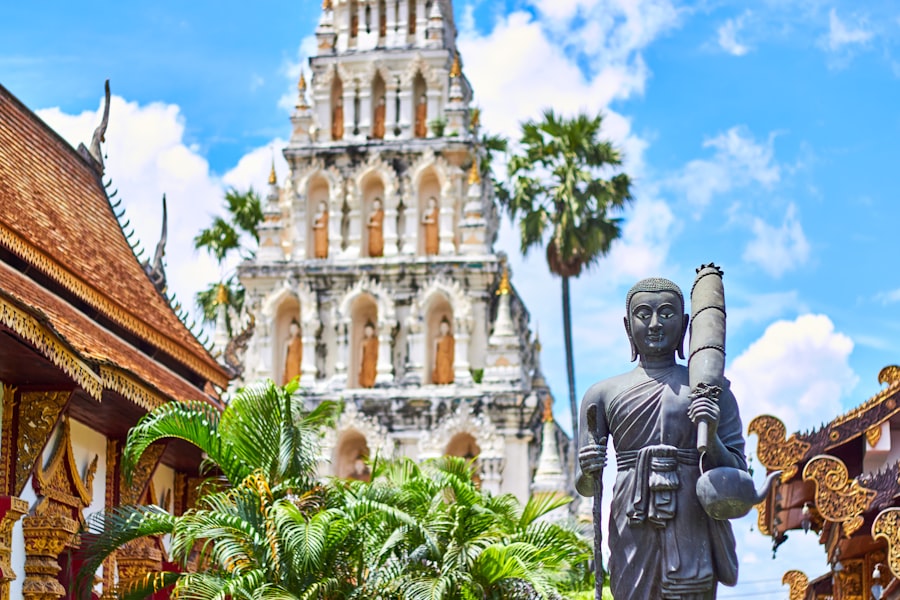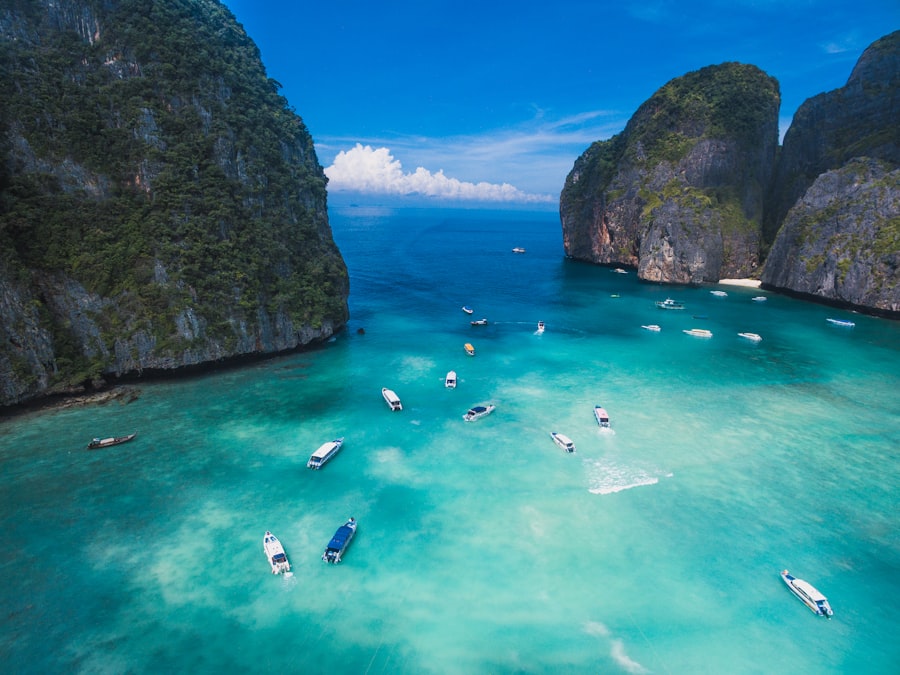Thailand, a nation renowned for its rich cultural heritage and stunning landscapes, is equally blessed with an abundance of natural resources. These resources play a pivotal role in the country’s economy, supporting various sectors such as agriculture, forestry, mining, and energy production. The geographical diversity of Thailand, which ranges from mountainous regions in the north to fertile plains in the central region and coastal areas in the south, contributes significantly to the variety of natural resources available.
This diversity not only sustains local communities but also attracts international interest and investment. The management and utilisation of these resources are crucial for Thailand’s sustainable development. As the country continues to industrialise and urbanise, the pressure on its natural resources has intensified.
Understanding the various types of natural resources in Thailand, their current status, and the strategies for their sustainable management is essential for ensuring that future generations can also benefit from these invaluable assets.
Summary
- Thailand is rich in natural resources, including agriculture, forests, minerals, water, energy, and wildlife.
- Agriculture and farming play a significant role in Thailand’s economy, with rice being the main crop and a major export.
- Thailand’s forests and timber resources are important for biodiversity, carbon sequestration, and the timber industry.
- The country has significant mineral resources, including tin, gypsum, and lignite, which contribute to its industrial development.
- Water resources in Thailand are crucial for agriculture, industry, and domestic use, but face challenges such as pollution and over-extraction.
Agriculture and Farming in Thailand
The Diverse Agricultural Landscape
The country’s agricultural landscape is characterised by its diverse range of crops, including rice, rubber, sugarcane, and fruits such as durian and mangosteen. Rice cultivation, in particular, holds cultural significance and is often referred to as the “king of crops.” Thailand is one of the world’s largest rice exporters, with its jasmine rice being highly sought after for its quality and fragrance.
Farming Practices in Thailand
The farming practices in Thailand vary widely, from traditional methods that have been passed down through generations to modern agricultural techniques that incorporate technology and innovation. Smallholder farmers dominate the agricultural sector, often relying on family labour and local knowledge. However, challenges such as climate change, land degradation, and fluctuating market prices pose significant threats to agricultural productivity.
Government Initiatives and Challenges Ahead
The government has initiated various programmes aimed at improving agricultural practices, promoting sustainable farming methods, and enhancing food security. Despite these efforts, the agricultural sector still faces significant challenges that need to be addressed to ensure the long-term sustainability of Thailand’s agricultural industry.
Forests and Timber Resources in Thailand

Forests cover approximately 32 per cent of Thailand’s land area, providing vital ecological services and supporting biodiversity. The country’s forests are home to a rich variety of flora and fauna, including many endemic species. Timber resources from these forests have historically been a significant economic driver for Thailand, with teak being one of the most valuable hardwoods harvested.
Teak wood is renowned for its durability and resistance to decay, making it highly prized in both domestic and international markets. However, deforestation remains a pressing issue in Thailand, driven by illegal logging, agricultural expansion, and urban development. The loss of forest cover not only threatens biodiversity but also exacerbates climate change by reducing carbon sequestration capabilities.
In response to these challenges, the Thai government has implemented various conservation initiatives aimed at protecting forest ecosystems. These include reforestation projects, community forestry programmes, and stricter enforcement of laws against illegal logging. The involvement of local communities in forest management has proven effective in promoting sustainable practices while also providing livelihoods.
Mineral Resources in Thailand
Thailand is endowed with a variety of mineral resources that contribute significantly to its economy. The country is rich in minerals such as tin, tungsten, gypsum, limestone, and precious stones like sapphires and rubies. Tin mining has historically been one of the most important sectors in Thailand’s mineral industry, particularly in the southern region where significant deposits are found.
The country was once the world’s largest tin producer, although production has declined in recent years due to depletion of reserves and environmental concerns. The mining sector faces numerous challenges, including environmental degradation and social conflicts with local communities. Mining activities can lead to soil erosion, water pollution, and habitat destruction if not managed responsibly.
In light of these issues, the Thai government has sought to promote sustainable mining practices through stricter regulations and environmental assessments. Efforts are being made to rehabilitate mined areas and ensure that local communities benefit from mining activities through fair compensation and job creation.
Water Resources in Thailand
Water resources are vital for sustaining life and supporting economic activities in Thailand. The country is endowed with numerous rivers, lakes, and reservoirs that provide water for agriculture, industry, and domestic use. The Chao Phraya River is the most significant waterway in Thailand, serving as a lifeline for millions of people living along its banks.
Despite the abundance of water resources, Thailand faces challenges related to water management. Seasonal variations in rainfall can lead to flooding during the monsoon season and droughts during dry periods.
Additionally, pollution from industrial discharges and agricultural runoff poses a significant threat to water quality. The government has implemented various water management strategies aimed at improving efficiency in water use, enhancing irrigation systems, and promoting conservation practices among communities. Integrated water resource management approaches are being adopted to ensure that water is used sustainably while meeting the needs of all stakeholders.
Energy Resources in Thailand

Renewable Energy Integration
Renewable energy sources such as solar, wind, biomass, and hydroelectric power are increasingly being integrated into the national energy mix.
Government Support and Initiatives
Thailand has made significant strides in promoting renewable energy through government policies and incentives aimed at encouraging investment in clean energy technologies. The country’s Solar Energy Development Plan aims to increase solar power capacity significantly by 2036. Additionally, community-based renewable energy projects have emerged as a means of empowering local communities while contributing to national energy goals.
Challenges Ahead
Despite these advancements, challenges remain in terms of infrastructure development, regulatory frameworks, and public acceptance of new technologies.
Wildlife and Biodiversity in Thailand
Thailand is home to an extraordinary array of wildlife and biodiversity due to its varied ecosystems ranging from tropical rainforests to coastal mangroves. The country boasts numerous national parks and protected areas that serve as sanctuaries for endangered species such as the Asian elephant, Indochinese tiger, and various primate species. These protected areas not only conserve biodiversity but also provide opportunities for ecotourism, which can be a sustainable source of income for local communities.
However, wildlife populations face numerous threats including habitat loss due to deforestation, poaching for illegal wildlife trade, and human-wildlife conflict as urban areas expand into natural habitats. Conservation efforts are underway to address these challenges through community engagement initiatives that promote coexistence between humans and wildlife. Education programmes aimed at raising awareness about the importance of biodiversity conservation are also crucial for fostering a culture of stewardship among local populations.
Sustainable Management of Natural Resources in Thailand
The sustainable management of natural resources is imperative for ensuring long-term ecological balance while supporting economic development in Thailand. Policymakers face the challenge of reconciling economic growth with environmental protection amidst increasing pressures on natural resources from population growth and industrialisation. Integrated approaches that consider social equity alongside environmental sustainability are essential for effective resource management.
Various initiatives have been launched to promote sustainable practices across different sectors. For instance, sustainable agriculture practices such as organic farming and agroforestry are gaining traction among farmers seeking to enhance productivity while minimising environmental impact. In forestry management, community-based approaches empower local populations to manage forest resources sustainably while benefiting economically from conservation efforts.
Furthermore, public awareness campaigns play a crucial role in fostering a culture of sustainability among citizens. By encouraging responsible consumption patterns and promoting conservation efforts at all levels of society, Thailand can work towards achieving a more sustainable future that preserves its rich natural heritage for generations to come.
FAQs
What are the main natural resources of Thailand?
Thailand’s main natural resources include tin, rubber, natural gas, tungsten, tantalum, timber, lead, fish, gypsum, lignite, and fluorite.
Where are the natural resources located in Thailand?
The natural resources of Thailand are located in various regions of the country. For example, tin is found in the southern part of Thailand, while rubber is mainly produced in the southern and central regions. Natural gas reserves are located in the Gulf of Thailand, and timber resources are abundant in the northern and northeastern regions.
How does Thailand utilize its natural resources?
Thailand utilizes its natural resources for various purposes, including export and domestic consumption. For example, the country exports rubber, tin, and natural gas to other countries, while also using these resources for domestic manufacturing and energy production.
What are the environmental challenges related to Thailand’s natural resources?
Thailand faces environmental challenges related to the exploitation of its natural resources, including deforestation, water pollution from mining activities, and overfishing. The government has implemented various measures to address these challenges and promote sustainable resource management.


